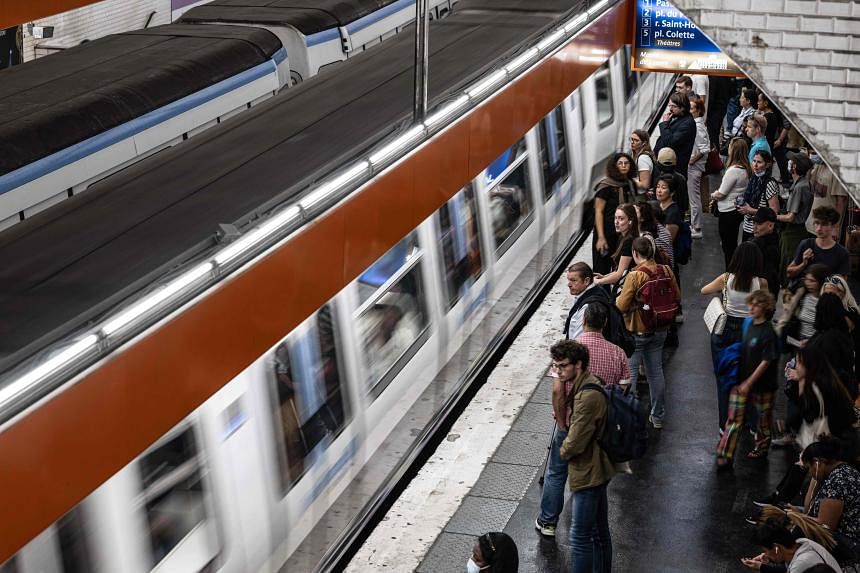What is one way to get a feel for a nation’s soul?
Try riding a train, and – instead of cancelling out the noise with a pair of earbuds – listen carefully to the tunes, chimes and jingles it makes as its doors open and close, and as it approaches and leaves a station.
“I think the appeal is the simplicity,” Mr Ted Green, a civil engineer, said in a 2021 New York Times article about his hobby: collecting the sounds and sights of transit systems.
“You wonder, how can there be so many different variations of beeps? And then you listen, and they’re all so different.”
Many nations reflect their history and culture in the melodic musical prompts, and in the beeps and pings they use as signalling tools in their railways.
In Rio de Janeiro, for instance, the “next stop” prompt is introduced by a “ding-dong” that sounds like a homage to bossa nova.
Others use the chimes and music as a showcase of their technological edge, to help soothe a usually stressful travelling experience, or to just flex some branding muscle.
Callbacks to the past
In Montreal, the metro’s door-closing chime came out of a collective attachment to an accident of mechanical acoustics.
The metro’s first trains, rolled out in 1966, made a noise that sounded like the first three notes of Aaron Copland’s Fanfare For The Common Man. The noise came from converters that worked to slow down the electronic frequency applied to the motor.
When the transit authority wanted to add a door-closing chime in 2005, none was as popular as a chime that mimicked this mechanical sound. So executives added a synthetic “doo-doo-doo”.
“Three simple notes – ‘doo-doo-doo’ – that have become synonymous to Montreal… Without these three notes, Montreal and its metro would not be the same,” said Mr Benoit Clairoux, a historian of Montreal’s transit system.
In South Korea, the Seoul Metro announced in January that it was replacing the transfer station song it had been using for 14 years to draw a line in the sand and separate a past haunted by Covid-19 and a more hopeful future.
Eolssiguya, introduced in 2009, had been meant to promote traditional Korean music, with a drums and strings arrangement that evokes a quiet, rural life.
It was replaced by Pungnyeon, which means a “year of good harvest”. It is still based on a traditional Korean song, but has a faster, more optimistic tempo and is arranged in a way that makes it give off a more lo-fi, engaging vibe.
A song for each station
But as in many things related to offbeat pop culture, Japan takes the cake.
The country has a unique “hassha merodii”, or train departure melody, for almost every station.
The melodies are meant to soothe the chaos that happens during rush hour in Japan. They signal how much “dwell time” riders have. It is essentially how much time a train is lingering at the station.
So, the music is meant to tell those taking the train when the doors are closing and how much time they have left to squeeze through them, a la Tom Cruise.
Most of the songs are just seven seconds long. But they can go on for as long as 30 seconds, depending on how many people are on the platform.
One station, in Etchujima, is famous for playing just a single beat due to very low ridership.
Other stations invoke the neighbourhoods and attractions that are nearby. The Maihama station, for instance, plays Disney melodies because it is the station that leads to Tokyo Disney Resort.
Most of these melodies were composed by just one man: Mr Minoru Mukaiya, who played the synthesiser for jazz fusion band Casiopea in the 1980s.
He is credited with composing some 200 melodies for more than 110 stations.
“The most important thing is to be easy on the ear,” he said in a 2018 interview with the news features site The Great Big Story.
“If it isn’t, it defeats the purpose. If it’s too high-pitched, it’s irritating,” he said.
Mr Mukaiya said he went to each station before he even began composing the jingles.
“I’ll remember the way a train enters a station, the way it curves, and I will create a melody that fits,” he said.
He believes it is a missed opportunity when train riders ignore the melodies as just ambient noise.
“It’s a nation asking you for a few seconds of your time to tell you what it’s all about.”
Meanwhile in Singapore, new chimes, based on familiar local tunes, are being played within selected trains and on some MRT station platforms when trains arrive and depart on the North-South Line, East-West Line and Circle Line.
Dr Samuel Wong, creative director of The Teng Company, said a lot of thought had gone into the research process for the tunes, and although the length of the tunes was modelled after those in Japan, the chimes were fully inspired by three local folk songs. He said in a LinkedIn post: “The chimes were composed or arranged from these three sources. They are: the Chinese children’s ditty San Lun Che (The Trishaw), the Malay folk song Chan Mali Chan, and Singai Naadu, the Tamil National Day work composed and arranged by Shabir Sulthan.”
The pilot initiative, introduced on Oct 29, will run for three months.


